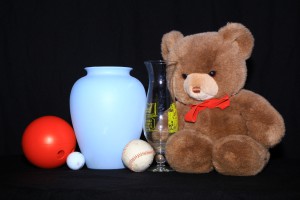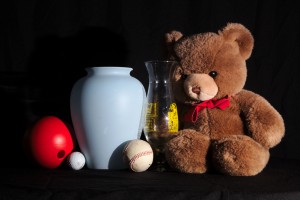On-camera lighting has been bashed, with good reason, by photographers for years. However, it is not always bad. Here are a few of my thoughts about and experiences with it.
Introduction
On-camera lighting refers to a built-in flash or a hot-shoe mounted flash, often called a Speedlight (Nikon) or Speedlite (Canon, Ricoh). This means that the light source is relatively close to the lens.
With the light source close to the lens, this means that there are few shadows, and what shadows there are tend to be small.
Disadvantages
Because of the few and small shadows, everything in the photo looks flat. Shadows show the shape of objects when all you have to work with is two dimensions as opposed to three. For example:
|
|
|
When taking photos of people, on-camera light often results in what is knwon as “red-eye”. This occurs when the flash bounces off of the retina and back to the camera. People tend to look like some kind of alien with a glowing eye. I will have to go create one of these to give as an example.
On-camera lighting used in lower-light situations tends to produce images that have a dark or black background. This is fine if it is what you want, but it can be distracting. I will have to go create one of these to give as an example.
Advantages
On-camera lighting is not completely bad though. It can be used to fill shadows. For example, on a sunny day, you can have your subject facing the sun. This is great for lighting their face, but will make them squint. Instead, turn them around so the sun is behind them. Then turn the flash on. Here are a pair of examples of using front lighting to fill shadows:
As I mentioned above, I tend to use a flash bracket when I want to use front light. My bracket is a Alzo Flip Flash Bracket. They claim it is for Canon cameras, but I see nothing in its construction that makes it Canon-specific. This bracket is heavy, but very versatile. It moves the front light source enough away from the lens to avoid red eye, but it is still close enough to fill the shadows.
Conclusions
On-camera lighting has a well-deserved reputation for making photos look boring and flat. However, it can be useful, when properly balanced with other light sources (a separate blog posting), to fill shadows. Don’t give up on it, but do consider getting a flash bracket to move it far enough away to avoid red eye.




